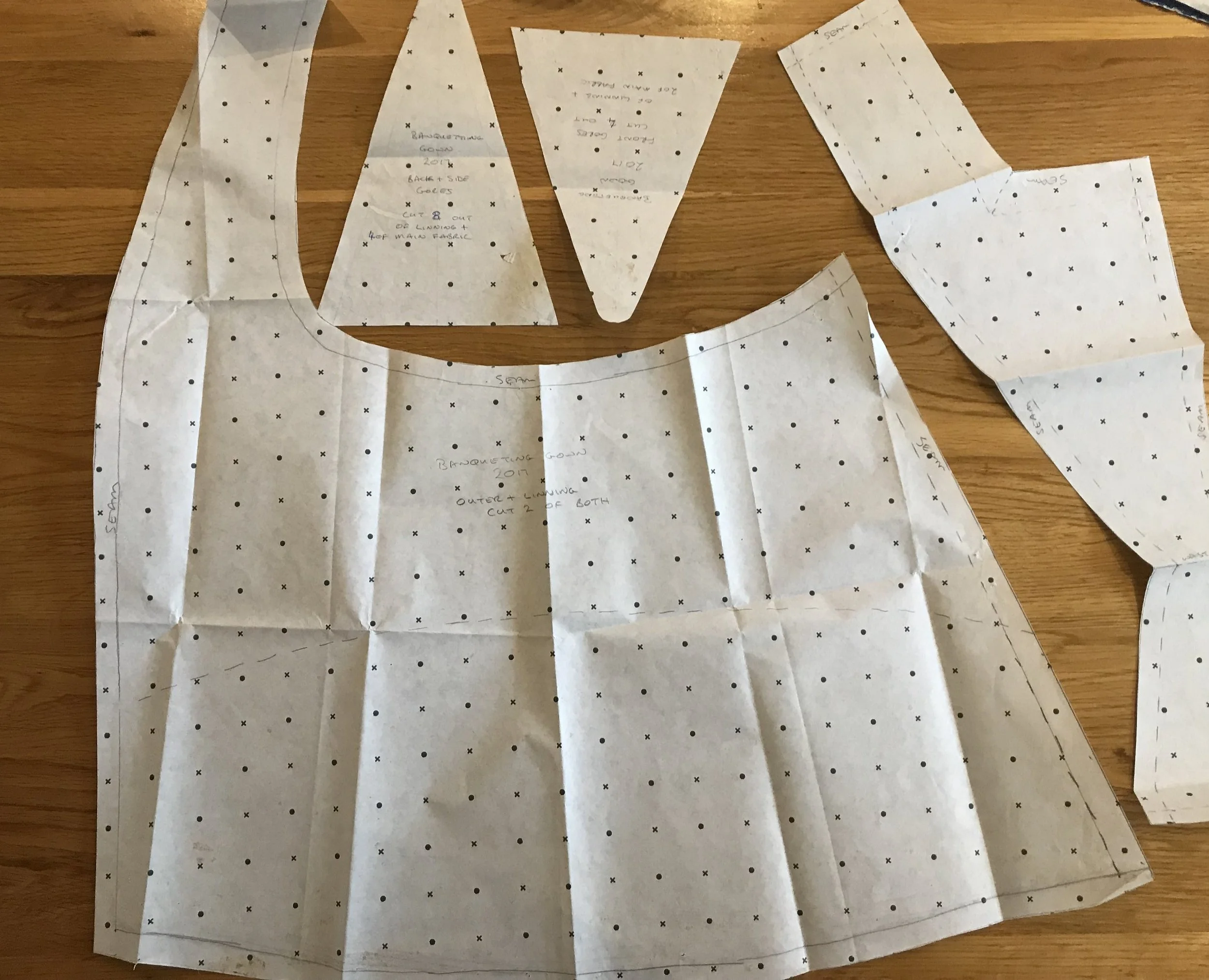Creating a Banqueting Gown Part IV
/Every good outfit needs accessories - particularly a party outfit. The seventeenth century dress made that I made from a gift of garnet silk looks very good on its own but the right accessories will make it even better. Below are some of the decisions and details of how I made the accessories for the dress.
The Stomacher
The original dress pattern in “Seventeenth Century Women’s Dress Patterns” clearly had a stomacher when it was in use but that has not survived. So I decided to look at a range of paintings for inspiration, including several of Henrietta Maria, wife of Charles II.
In the end, the one that I chose as a model was a painting of Helene Fourment painted by her clearly very loving husband Peter Paul Ruebens.
The photo here is not very clear but you can see 4 parallel strips of colourful ribbon running between the edges of her bodice and the stomacher is the topmost outer layer across the bust.
Helene Fourment by Ruebens, taken from a Wipidedia image
I chose to go with 4 strips of coloured ribbon across the front of a stomacher made in the same colour as the gown, much as Helene has. I spent some time searching for linen, cotton or silk ribbon in colours that would compliment the dress colour. I very quickly gave up as it was like looking for a needle in a haystack - or, as my husband would have it, I was far too exacting in my requirements!
So I decided to make use of the Inkle loom that I own to make a ribbon in exactly the right colours. Using embroidery floss, which is cotton but looks like silk, I chose three colours. A background of cream, a central highlight of pink and an edging and highlight strip of dark red/brugundy. The pattern is a basic one adapted from an internet pattern.
This turned out be very successful, making just the right length of ribbon to zigzag across the stomacher 4 times.
The stomacher itself was made of two layers of firm buckram (very stiff fabric) pad stitched together so they do not slip. A piece of linen the same size as the buckram was stitched to the back of the stomacher as a lining. Then I cut a piece of the silk that was significantly larger than the buckram and turned a small hem using a long running stitch with a continuous thread all the way around the outside. This thread was used to pull up the silk around the edge of the stomacher, so that it wrapped around the back, covering the edges and the stitching on the lining piece. These small pleats were then tacked down to keep the tension and spacing of the gathered silk and the original running stitch was removed. The result as a very smooth front with no visible stitching on it.
To the stomacher, I added the ribbon and also 4 hooks and eyes on each side. These attach to the inside of the bodice fronts, holding the stomacher in place. They do not take any strain from the bodice body - that is all taken by the hidden inner lacing panel under the stomacher. Just like magic, the dress looks impossible from the outside as you cannot see how it stays closed.
Inkle loom with ribbon
Collar and Cuffs
When choosing a suitable collar, I had two inspirations; the linen and lace collar on page 128 of “Seventeenth Century Women’s Dress Patterns” and the picture here of Lady Bowes from a portrait in The Royal Collection. Lady Bowes has a collar that comes straight over her shoulders with lace around the edge and along the neck line, which runs alongside the shoulder of her dress, but you cannot see the back detail. The collar in the pattern book has very many fine pleats around the back of the collar and ends in a straight section across the shoulders although not in quite the same way. I used cream coloured linen and lace for my collar as it sets off the garnet silk very well.
The pleats were a nightmare! They took forever to do but I think look quite good now they are finished. The lace was eased into the curve rather than gathered and sits well on the curve of the back. The front looks much like Lady Bowes, except my lace was not woven with a square L-shape in it (being modern polyester lace!) so it is gathered around the square corner of the collar to make the L shape.
Lady Bowes, British School from the Royal Collection.
The back of the collar once complete
Next week forms the last part of this series, when I will show the dress with all its final accessories. Please contact me through the website if you want to ask for more details of the methods and construction which I may have glossed over here. Advice and pointers will be given freely, although if you wish to order banqueting clothes they are a little more expensive.






